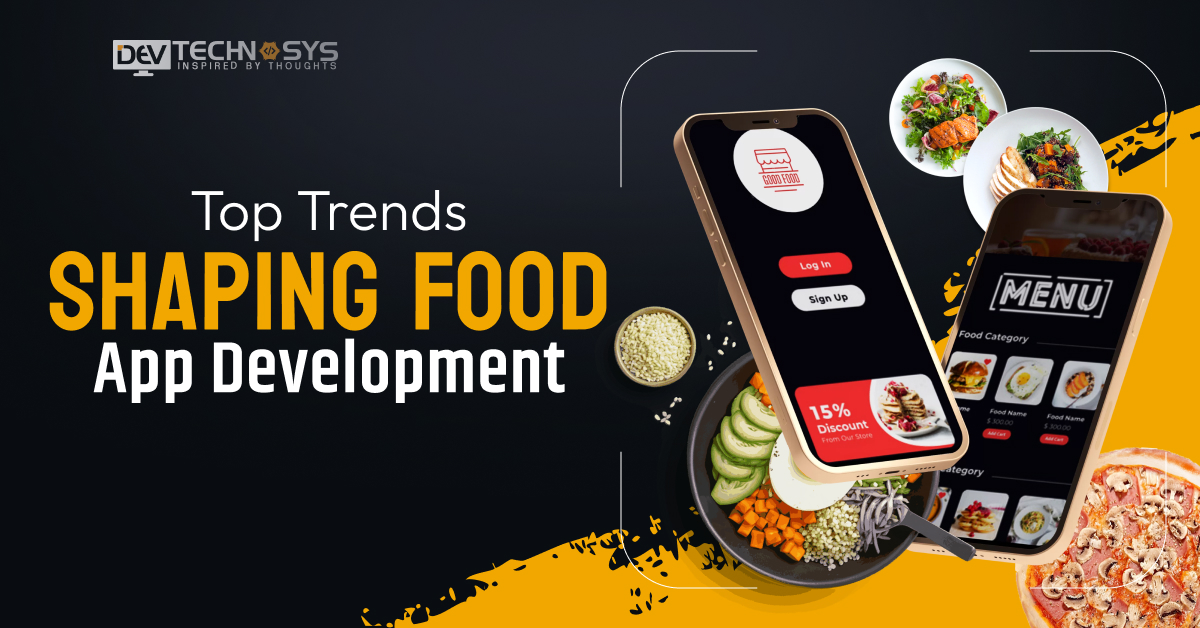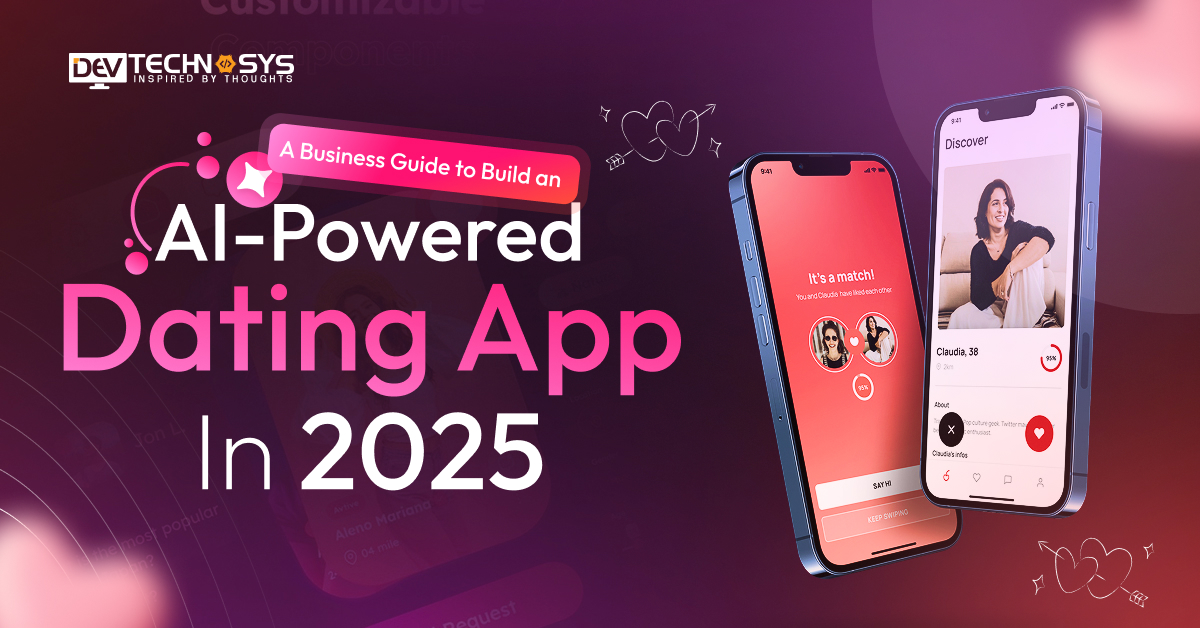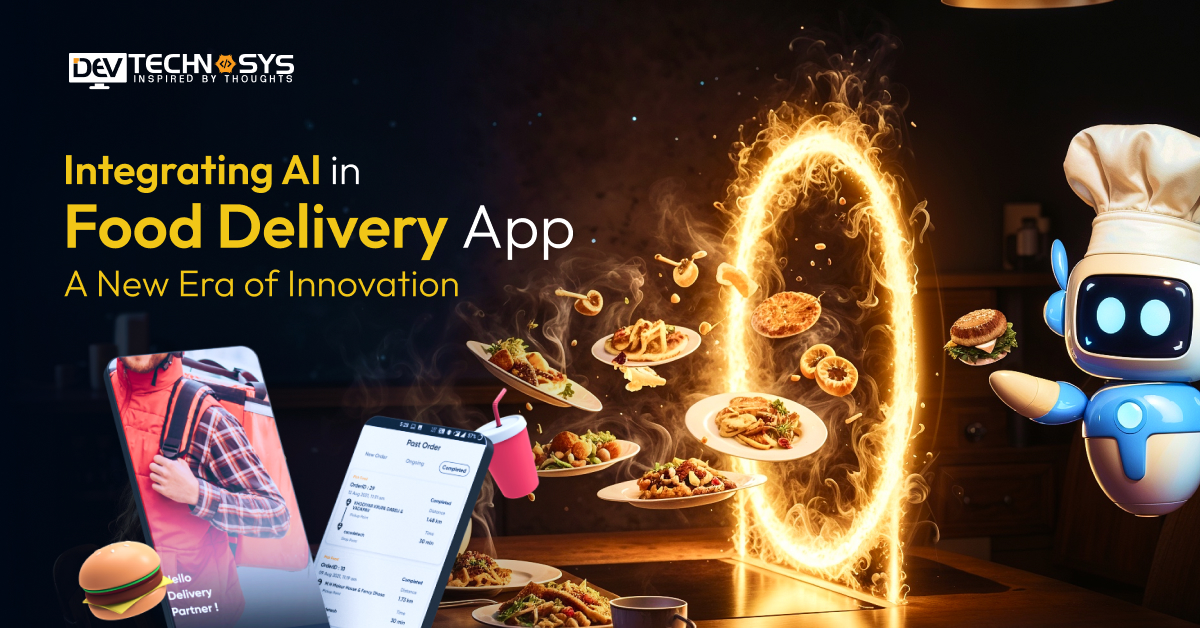“Get ready to shape your business with the latest food app development trends.”
The food ordering and delivery industry has involved advanced technologies with latest trends, transforming the way users buy food. Businesses investing in the food app development delivered market-ready features at affordable rates. It is important to know the trends that have been rolled out for modern investors, particularly in the UAE market.
You can easily develop a food delivery app by following these trends that help in the implementation of advanced features for users. Additionally, to start a food delivery app business, involvement of specialized tech stack is crucial.
In this blog, we will study major facts that will help businesses to easily implement these trends for creating smart and dynamic food applications.
Growing Market of Food Ordering & Delivery Business
The worldwide food ordering and delivery industry is expanding at a fast rate due to growing customer demand for digital services and convenience. So, you can create a food delivery app to change eating patterns by deployment of new technology. Entrepreneurs can open a food delivery business in Qatar with growing lifestyles and urbanization that are the main drivers of this strong expansion.
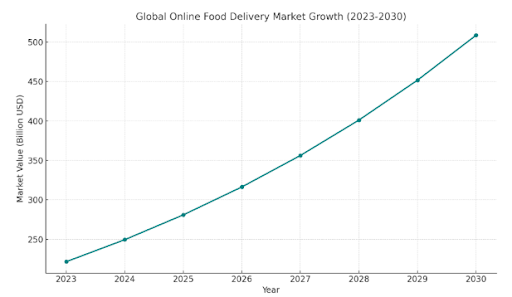
- The global online food delivery market was valued at $221.6 Billion in 2023.
- Projected to reach $505.5 Billion by 2030, growing at a rate of 12.6% CAGR from 2023 to 2030.
- Asia-Pacific leads the market, accounting for 40%+ of global revenue in 2024.
- 70% of food orders are now placed via mobile apps globally.
- Third-party delivery platforms like Uber Eats, DoorDash, and Deliveroo account for over 55% of total online food delivery revenue.
Benefits of Investing in Food App Development
Businesses can make a food delivery app to gain a competitive edge by investing in the UAE market. With a population that has a high smartphone penetration rate, food apps increase revenue:
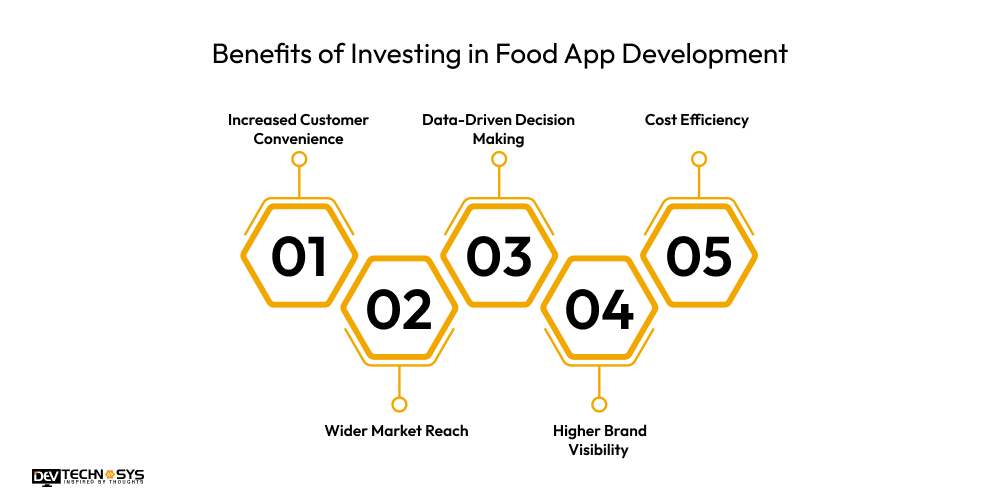
-
Increased Customer Convenience
Users of food apps benefit from easy ordering, a variety of payment methods, and real-time delivery monitoring. Businesses can develop a food delivery app to increase customer loyalty and satisfaction. Positive brand perception and repeat business are the results of convenient experiences.
-
Wider Market Reach
Beyond the constraints of physical stores, a culinary app enables businesses to reach a wider audience in the UAE market. Geographic coverage is increased by integrating the delivery features panel with food restaurant app development services. This increases revenues and draws in new clientele.
-
Data-Driven Decision Making
Apps for food provide useful information about consumer preferences, behavior, and buying patterns. Businesses can use this information for food delivery app innovation and include features like inventory control and menu optimization. Profitability and operational efficiency are increased by data tactics.
-
Higher Brand Visibility
In a cutthroat market, having a specialized app improves brand visibility and presence. A business stays at the forefront of consumers’ minds through implementation of features like loyalty programs by approaching a mobile app development company in UAE. Long-term loyalty and stronger client relationships are fostered by this.
-
Cost Efficiency
The cost to create a food delivery app is decreased by automating order processing and minimizing human error. A food app reduces the need for substantial infrastructure and in-house personnel. This eventually results in higher profits and more scalable company expansion.
Top Food App Development Trends in 2025
In 2025, the food app development is changing quickly to keep up with growing customer demands. To provide better user experiences, the newest trends emphasize sustainability, ease, and transparency:

-
Hyper-Personalization with AI/ML
Apps can now assess user behavior, preferences, and past purchases to provide hyper-individualized suggestions with AI and ML. This raises the frequency of orders and improves client engagement. Additionally, food delivery trends with personalized marketing become more focused.
-
Voice Search & Ordering
Smart gadgets with voice-enabled search and ordering let users place orders without using their hands. This feature expedites the ordering process and improves accessibility. You can develop a Halal Food Finder app that serves people with vision impairments or those who are constantly on the run.
-
AR for Menu Visualization
AR improves menu engagement by enabling users to see 3D versions of meals on their devices prior to placing an order. By visualizing portion amounts and presentation, it assists customers in making well-informed decisions. So, you can develop a food delivery app to increase user engagement.
-
Real-Time GPS
Customers can track and maintain food freshness during transit status of their orders and deliveries in real time via real-time GPS tracking. It increases trust in the delivery process and increases openness. For quicker service, it also aids in delivery route optimization.
-
Eco-Friendly Features
Concern over sustainability is growing, which is why food ordering platforms are starting to provide environmentally friendly features like carbon-neutral shipping. An app like Talabat may also allow users to monitor their environmental effect and recommend eco-friendly eateries.
-
AI-Powered Chatbots
AI-powered chatbots track orders, answer frequently asked questions, and offer immediate customer service. They lower the cost of human support by providing 24/7 help. By making tailored suggestions, intelligent bots can also promote cross-selling and upselling.
-
Loyalty Programs
An app like Smile UAE works together to give regular users discounts, points, or special deals. Badges and streaks are examples of gamification components that increase user engagement even more. This promotes brand loyalty and long-term consumer retention.
-
Multi-Platform Synchronization
Apps for food delivery operations are embracing seamless cross-platform synchronization between wearables, tablets, smartphones, and smart TVs. A consistent and integrated user experience is thus guaranteed. An order can be started on one device and finished on another.
-
Subscription-Based Meal Services
Users of subscription models can get limitless deliveries or carefully planned meal menus for a regular charge. In addition to guaranteeing steady revenue streams for companies, this encourages client loyalty. So, you can create a food delivery app for users who are busy with extra tasks.
-
Advanced Payment Options
Digital wallets, BNPL (Buy Now Pay Later), and cryptocurrency compatibility are examples of new payment methods that are being incorporated. Various apps like Postmates offer ease and flexibility at the register. They also increase the app’s user base and improve security.
-
Virtual Restaurants
Virtual or “ghost” restaurants don’t have actual dine-in locations as they only offer delivery services through apps. With reduced cost to create a food app, they enable brands to test out new menu items. This format is perfect for rapidly growing or testing new ideas.
-
Social Media Integration
Through social network integration, users can post food images, reviews, and orders straight from the app. Additionally, you must create a food delivery app to support influencer-driven marketing and social login. This promotes organic user acquisition and raises the app’s prominence.
-
Dietary & Allergen Filters
Users can quickly locate menu items that meet their dietary requirements or allergies thanks to improved filtering. Apps become more user-friendly and inclusive as a result. Additionally, it lessens the possibility of unpleasant food sensitivity-related encounters.
-
Video-Based Cooking Tutorials
Video tutorials are being added to apps to keep consumers interested in things other than buying food. These videos highlight new recipes, give cooking advice, or advertise restaurant discounts. This enhances the user experience by reducing the cost of developing a mobile app in the UAE.
-
Blockchain for Supply Chain Transparency
Blockchain makes it possible to trace ingredients and sourcing methods, which guarantees transparency across the food supply chain. By enabling users to confirm food origins and safety regulations, it fosters confidence. This is especially beneficial for high-end and health-conscious brands.
Leading Food Delivery Business Models in UAE
Diverse business models are the foundation to develop a food delivery app in the UAE. These approaches influence the environment of food delivery by promoting convenience, effectiveness, and market reach:
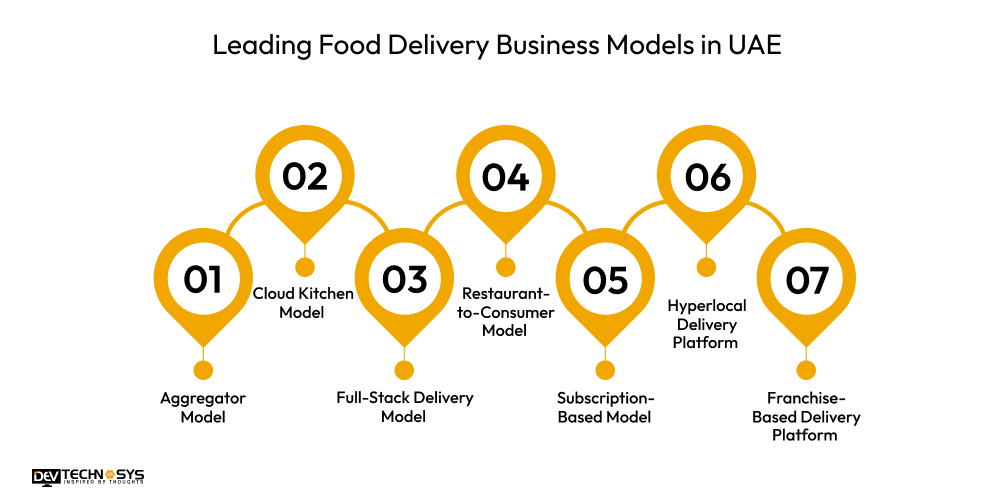
-
Aggregator Model
By serving as a marketplace, this concept links patrons and several eateries via a single platform. It focuses on order facilitation and customer experience rather than having its own cooks or delivery personnel. This strategy is used by top food delivery apps in UAE like Talabat and Zomato.
Example: Talabat is a popular platform that aggregates multiple restaurants and allows customers to order from various cuisines via a single app.
-
Cloud Kitchen Model
Cloud kitchens just prepare food for delivery orders as they don’t have a real dine-in area. Serving several brands from a single location through restaurant mobile app development solutions lowers overhead expenses and boosts kitchen usage. Faster deliveries of menu items are supported by this model.
Example: Kitopi is a cloud kitchen operator that prepares food for multiple restaurant brands exclusively for delivery without dine-in facilities.
-
Full-Stack Delivery Model
The whole supply chain is under the control of a connected concept. It guarantees quality control and a consistent consumer experience by overseeing kitchens, employees, and logistics. You can make a food delivery app like Careem NOW and Deliveroo that have in-house kitchens.
Example: Deliveroo operates its own kitchens and delivery logistics to provide fast, quality-controlled food delivery services.
-
Restaurant-to-Consumer Model
In this case, individual eateries oversee their own delivery services, which are frequently run via their websites or applications. This technique lessens reliance on outside channels while fostering brand loyalty. You can hire food app developers to enhance customer service and logistics.
Example: Al Safadi Restaurant is a well-known restaurant chain that offers direct online ordering and delivery through its own platform.
-
Subscription-Based Model
In exchange for unlimited or subsidized food deliveries over time, customers pay a monthly cost. Predictable revenue streams are encouraged by investing money to create a food delivery app. Regular customers searching for convenient and reasonably priced lunch options find it appealing.
Example: Eat App offers subscription plans for frequent diners to get discounts and unlimited delivery on meals from partner restaurants.
-
Hyperlocal Delivery Platform
This strategy makes use of local kitchens integrated with food delivery app development services to swiftly distribute food. It prioritizes freshness and quickness, especially for metropolitan clients with urgent food needs. For variety, it frequently combines with several food sources.
Example: Carriage focuses on fast delivery within localized areas, connecting nearby restaurants to customers quickly.
-
Franchise-Based Delivery Platform
By enabling food delivery applications to operate delivery shops under a brand, this approach grows food delivery businesses through franchising. It makes use of local market knowledge while guaranteeing brand consistency. By fusing decentralized operations with centralized assistance, it speeds up growth.
Example: McDonald’s UAE uses franchising to expand delivery services while maintaining brand standards across multiple locations.
Use of Emerging Technologies for Food App Development
By improving user experience, emerging technologies are completely changing the food app development. These developments enable businesses to effectively satisfy changing consumer needs:
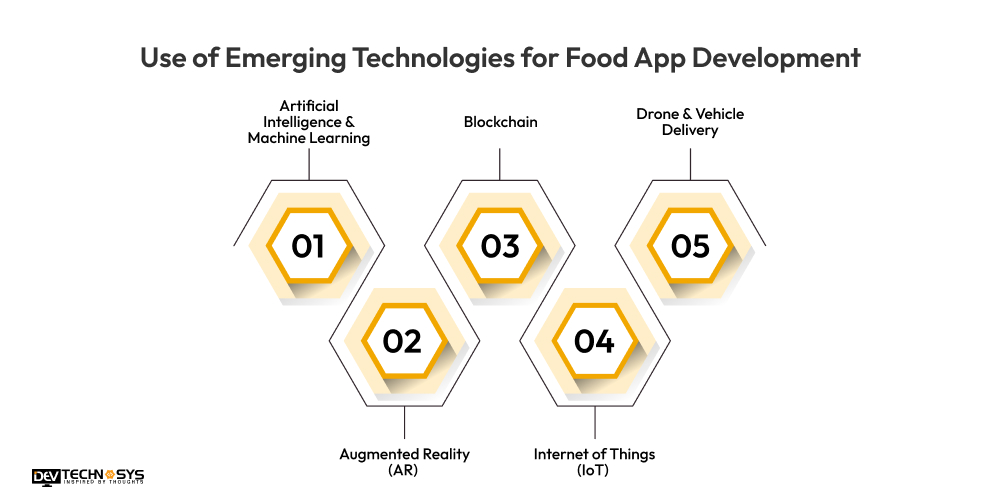
-
Artificial Intelligence & Machine Learning
In order to estimate demand, improve delivery routes, and provide individualized meal recommendations, AI and ML examine customer behavior and preferences. They also simplify inventory management and improve chatbot interactions for smooth customer service.
-
Augmented Reality (AR)
Customers can see food in three dimensions before placing an order because businesses use Android app development services, which increases customer interaction and speeds up decision-making. In order to foster trust, it also provides interactive menu experiences and can help with virtual kitchen tours.
-
Blockchain
In the food supply chain, blockchain technology guarantees safe, transparent transactions and traceability. You can create a food delivery app that assists in tracking order history, confirming the validity of ingredients, and protecting consumer information from fraud.
-
Internet of Things (IoT)
IoT devices keep an eye on inventory levels and temperature in the kitchen in real time, guaranteeing the freshness and safety of the food. Live tracking is another feature that is connected with delivery trucks. This increases the food delivery app development cost along with customer happiness.
-
Drone & Vehicle Delivery
Particularly in crowded cities, drones and driverless cars speed up delivery times while lowering expenses and human reliance. They provide contactless delivery choices, which improve consumer and company convenience and security.
Challenges in Implementing Food App Development Trends
Using the newest trends in food app creation gives you a competitive edge, but there are drawbacks as well. For smooth operation and long-term user happiness, these obstacles must be removed:

-
Integration Complexity
Many times, modern food apps need to sync with iOS app development services like restaurant POS, delivery tracking, and payment gateways. Technical issues and delays may result from this intricacy.
Solution: Simplify and standardize integrations by utilizing middleware platforms and reliable APIs.
-
Data Privacy & Security
Managing private client information raises the possibility of security lapses and problems adhering to laws such as GDPR. Although difficult, ensuring secure transactions is essential.
Solution: End-to-end encryption should be used, and security procedures should be updated frequently.
-
High Maintenance Costs
The cost to maintain an app is increased by frequent upgrades, bug fixes, and infrastructure scaling, particularly when features are released quickly. Continuous investment is necessary to maintain app performance.
Solution: To cut maintenance costs, use modular architecture and cloud-based services.
-
User Adoption
Users may get confused or hostile when new features or technologies are introduced, which could affect engagement and retention. It’s challenging to make a food delivery app without interfering with user experience.
Solution: To facilitate user transfer, offer clear onboarding and in-app tutorials.
In a Nutshell!!
As you have seen, food app development trends help businesses in different ways to become successful in the UAE food industry. It is easy to develop a food delivery app by incorporating these trends as features and services for users. Various food delivery app development companies in Riyadh like Dev Technosys, help businesses to start their new venture.
Additionally, they offer affordable rates increasing the productivity of the platform with the use of additional resources. So, you must focus on the trends that we have discussed in this blog to implement them with your existing brand. This will help you in business growth and provide a consistent revenue through user engagement.
FAQs
1. What are the Key Trends Driving Food App Development in 2025?
AI-powered hyper-personalization, voice-activated ordering, AR-powered menu visualization, and real-time delivery tracking using drones and driverless cars are some of the major trends. Eco-friendly packaging and carbon footprint tracking are examples of sustainability features.
2. How is Artificial Intelligence Transforming Food Delivery Apps?
AI makes it possible for dynamic pricing, predictive ordering based on consumer preferences, and tailored food recommendations. Additionally, it automates delivery route optimization to cut down on delivery times and powers chatbots for immediate customer service.
3. Why Should Food Businesses Adopt Emerging Technologies Like AR and Blockchain?
- AR allows customers to visualize dishes.
- Blockchain ensures traceability in the food supply chain.
- Adopting innovative technologies helps businesses in a crowded market.
4. What Challenges do Businesses Face When Implementing New Food App Trends?
- Integration of expensive technologies like AR, AI, and blockchain.
- Management of customer data with privacy regulations.
- Addition of premium and advanced features.
5. How can Small and Mid-Sized Restaurants Benefit from these Trends?
Small restaurants may increase customer retention and compete with larger companies by implementing AI-based personalization and loyalty programs. Without making a large financial commitment, voice ordering or AR menus can improve the consumer experience.



